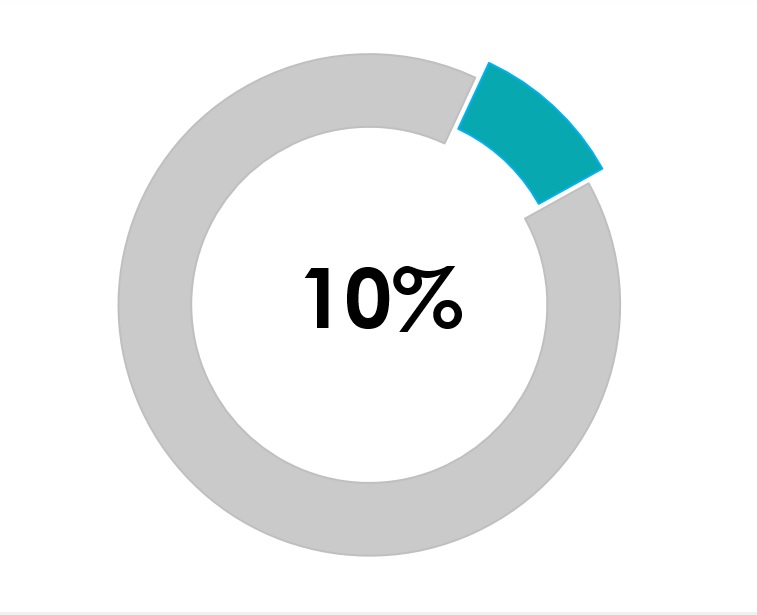Reading the second part of How to be Great at Doing Good is like painting shellac over the top of the puzzle you just completed. You've invested time and effort into piecing together this intricate picture, and now you want it to stick - hopefully forever. The second half of this book reinforces and glues together all the little pieces we were working with in the first half. It adds some practical ways of overcoming the biases and cultural norms that hold us back from doing a lot of good.
In this chapter Cooney also introduces us to another premise [for previous premises see Part I]. While this one is only articulated explicitly a few times, it is another fundamental underlying belief of the author (and to many Effective Altruists).
4. All lives have equal value. Animal lives also have intrinsic value.
While it sounds similar to the Bill & Melinda Gate's foundation mission statement (because, well it is) the point made in this premise is a good one, and it sets us up well to discuss the second half of the book. We, as humans, have a tendency to favor taking care of those both geographically close to us, as well as most similar to ourselves (socially, racially, economically etc). Cooney goes into a number of studies that show how true and reasons why these preferences may exist. However, he sums up how this can be harmful succinctly when he states:
[W]e provide care to those who are in front of us at the expense of the many who are not... If our goal is to reduce suffering and increase well-being, it doesn't make much difference where on the globe that's taking place and who is experiencing it.
This one bias means that frequently we overlook the greatest amount we can do because the problem is far away or involves people not like us. For example very few US based charities look for opportunities to work overseas, where their resources may go much further in helping people in their cause area. This means that these charities are not prioritizing the cost per saving a life, but prioritize helping those closer and more like themselves, or more accurately, closer and more like their donors.
This preference directly impacts a charity's ability to do the most good because they are not looking at their bottom line. Part of this is because few charities examine their work from a data-driven framework. Cooney points out that charities rarely gather data on 'cost per' - mainly because donors don't ask for it. If organizations don't have incentive to collect good useful data they frequently don't. Often they feel they don't have the resources, there is to reason to, among many other reasons.
Does it seem strange to you that donors aren't asking for this information? It did to me too! But according to the Money for Good surveys only 6 percent of donors spent any time whatsoever on comparing the impact of different non-profits they donated to.
The vast majority said they do care about impact, and one-third of them said they would like to see research that compared different non-profits. But saying and doing are two different things.
That is the crux of it isn't it? Saying and doing are two different things. And doing things is hard. Comparing charities isn't just hard, it is intense, extensive, analytical, time consuming work.
Cooney proposes, what I think, is a very elegant solution! Charity brokers. The same way we have stock brokers than manage our money in the complex, confusing, data driven world of finance, we need experts in the field of charities available to donors. However there is almost no one out there doing this work. and of those that are out there less than 5% of them "recommend charities based on how much good they do." Egads! What are they recommending them based on?!
Unfortunately in the vacuum of charity brokers donors turn to things like Charity Navigator, and GuideStar. Both organizations do an important job of guarding against fraudulent organizations however their ranking systems are not based on how successful a charity is. Partly because charities don't make their bottom line data readily available so donors and these sites rely on what is available. Things like the number of members on their board and the amount spend on administrative and salary costs each year. Which is a terrible way to judge a charity.
So a lack of donor demand leads to charities not collecting data, or collecting the wrong data, which leads donors who are interested in data to turn to unhelpful and inconsequential information.
It is our job as donors to help stop this Catch 22. By requesting explicit clear cost-per breakdowns and bottom line data from our charities. By letting charities know we don't care about overhead or administrative costs. By donating our money as unrestricted funds and grants without limits or specializations. It is important as donors to request this information explicitly and consistently from our organizations.
And what about those of us that work at non-profits? How can we help stop this cycle? By collecting data! Cooney specifically points out how organizations should be running tests to determine the best way to do good. Frequently non-profits think that they lack the hours, man power, and money do run such tests, and that doing so would detract from the work they are trying to do. Cooney points out that by running these tests to find out what we don't know, to find out what works best, an organization can actually increase their ability to create impact significantly and make their money go further than they ever thought possible!
























